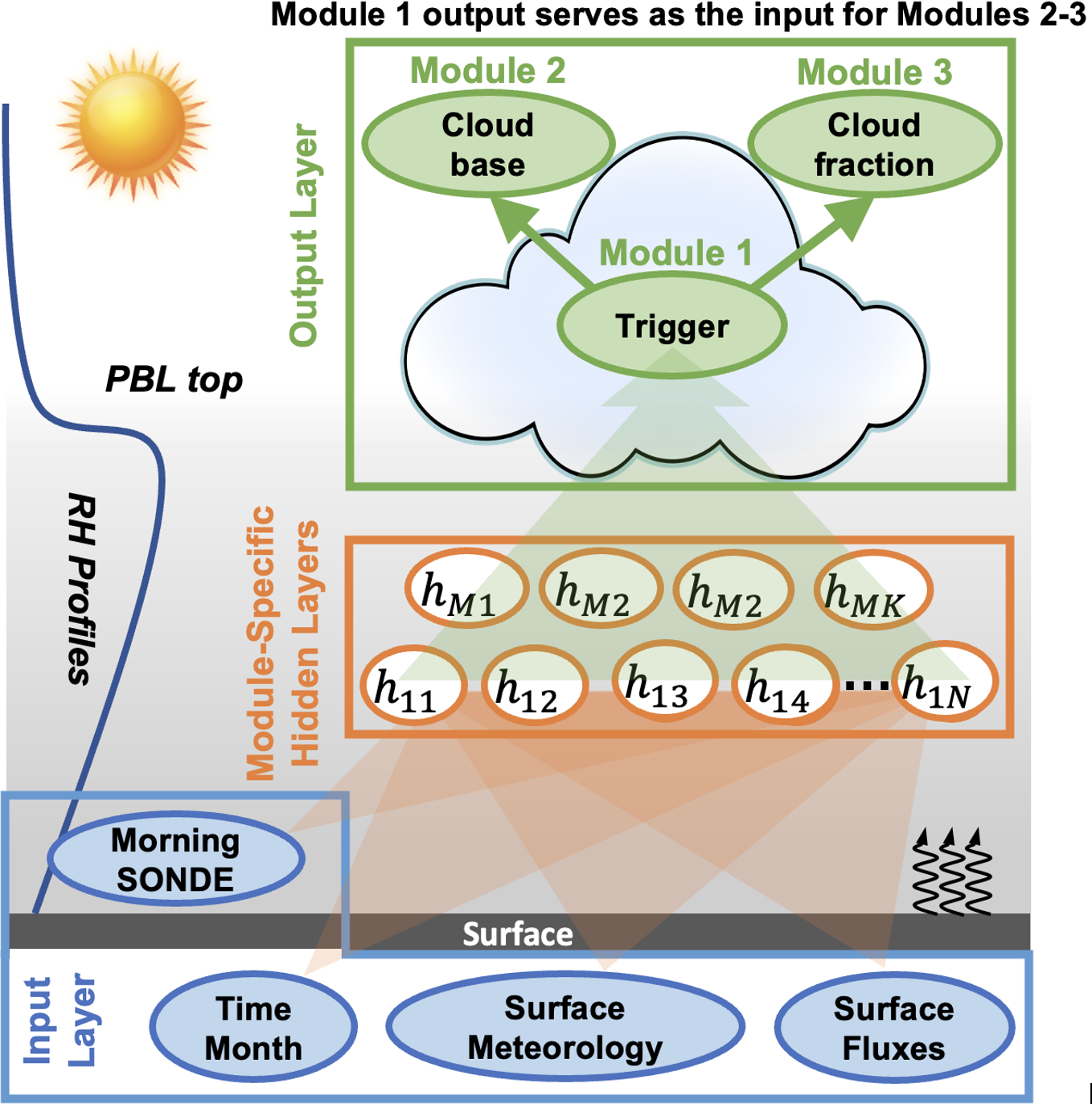Deep-learning-driven simulations of boundary-layer clouds
Submitter
Zhang, Yunyan — Lawrence Livermore National Laboratory
Su, Tianning — Lawrence Livermore National Laboratory
Area of research
Cloud Processes
Journal Reference
Science
A deep-learning model was developed to simulate the daytime evolution of boundary-layer clouds using long-term observations from the U.S. Department of Energy Atmospheric Radiation Measurement (ARM) user facility's Southern Great Plains (SGP) observatory. This model integrates early morning soundings and diurnal surface meteorological conditions to estimate hourly cloud occurrence, cloud boundaries, and vertical cloud fraction profiles. Compared to reanalysis data, our model shows improved accuracy in simulating cloud fields.
Impact
This observation-based deep neural network (DNN) model represents an advancement in simulating boundary-layer clouds with better accuracy. It also offers insights on the directions to improve the simulation of boundary-layer clouds in physics-based models for weather forecasting and climate prediction, by quantifying and dissecting biases in clouds and attributing them to the simulated atmospheric state variables versus the model parameterized cloud processes, respectively.
Summary
Based on long-term observations at the ARM SGP site for training and validation, a deep-learning model was developed to simulate the daytime evolution of boundary-layer clouds from the perspective of land-atmosphere coupling. The model takes ARM measurements as inputs, including early-morning soundings and the diurnal-varying surface meteorological conditions and heat fluxes, and predicts hourly estimates as outputs including the determination of cloud occurrence, the positions of cloud boundaries, and the vertical profile of cloud fraction. The deep-learning model offers good agreement with the observed cloud fields, especially on accuracy in reproducing cloud occurrence and base height. If substituting the inputs by reanalysis data from ERA5 and MERRA-2, the outputs of the deep-learning model provide a better agreement with observation than the cloud fields extracted from reanalysis data themselves. From such practice, the deep-learning model shows great potential to diagnose the performance of physics-based models in simulating stratiform and cumulus clouds.



